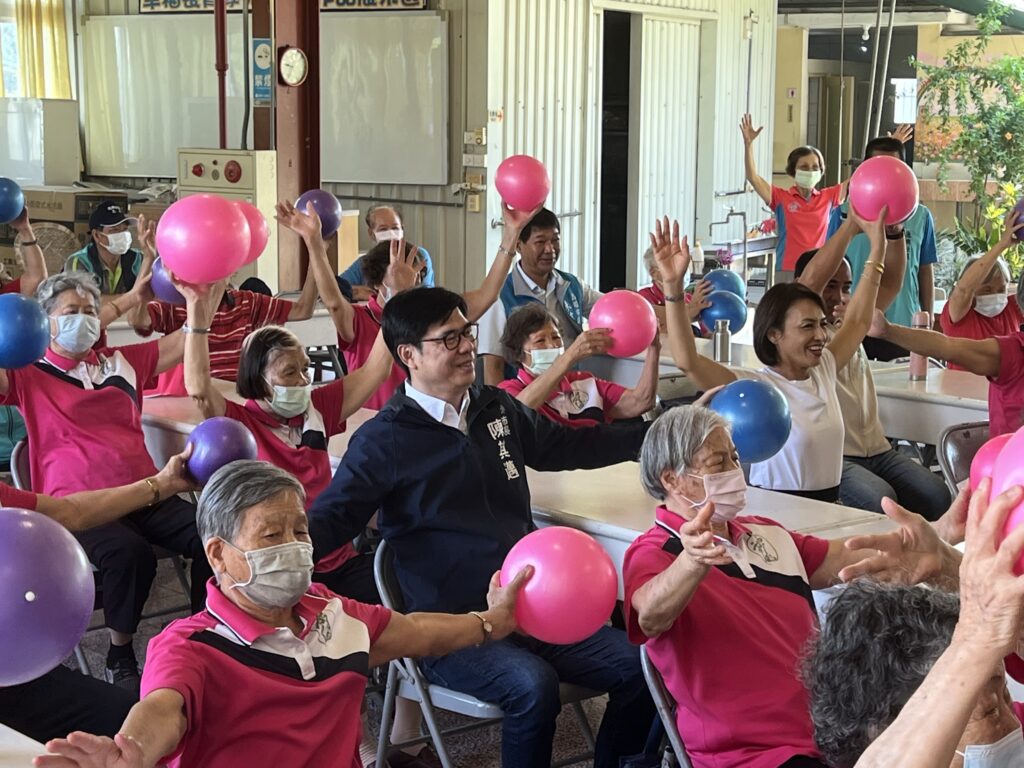what are the two body forms of cnidarians
Most Cnidarians also have a toxin in their stinger which helps to disable the prey. If you are redistributing all or part of this book in a print format, Interestingly, the gamete-producing cells do not arise within the gonad itself, but migrate into it from the tissues in the gonozooid. Two distinct body plans are found in Cnidarians: the polyp or tuliplike "stalk" form and the medusa or "bell" form. However, with a few notable exceptions such as statocysts and rhopalia (see below), the development of organs or organ systems is not advanced in this phylum. - Definition, Uses & Formula, Saturation: Definition, Function & Effect, Limiting Factor: Definition, Principle & Examples, Essential Amino Acid: Definition & Overview, Glutamic Acid: Structure, Formula & Function, Working Scholars Bringing Tuition-Free College to the Community, Siphonophore made of four polyps that work in conjunction to eat and reproduce, Long tentacles covered with venomous nematocysts, Found in coastal waters along the western United States, Polyps that often coexist with symbiotic species of fish and algae, Utilizes both asexual and sexual reproduction, Characterized by both polypoid and medusoid forms, Cycles of asexual and sexual reproduction producing polyps and medusae, Eight arms with tiny tentacles on the tips. In these species, the polyp serves as the asexual phase, while the medusa serves as the sexual stage and produces gametes. The Cnidarian can have one of two basic body types, polypoid or medusoid. Each has their own typical characteristics that can help you determine which body type you have. Nonetheless, the presence of eyes helps the cubozoans to be active and effective hunters of small marine animals like worms, arthropods, and fish. The Anthozoa contain only sessile polyp forms, while the Medusozoa include species with both polyp and medusa forms in their life cycle. Its mouth and tentacles are generally pointed up. Left: Hydra l.s. There aretwo major body forms among the Cnidaria - the polyp and the medusa. Polyps use asexual reproduction to form an ephyra, a larval form which matures into the medusa. Because the tentacles of corals, jellyfish, and sea anemones have this radial structure, they can sting and capture food coming from any direction. The hydrozoan lifecycle is characterized by both the presence of polyps and medusae, as well as alternating cycles of asexual and sexual reproduction. Nematodes Properties & Examples | What are Nematodes? Our mission is to improve educational access and learning for everyone. The Phylum is divided up into 3 Classes, called the Hydrozoans (meaning "water-animals"), the Anthozoans (meaning "Flower-animals") and Scyphozoans (meaning "bowl-animals"). This means that they live attached to the bottom with their tentacles and mouth pointing up. Cnidarians as a whole have two body forms: the polyp and the medusa. The human body--and its parts--has long been a target for commodification within myriad cultural settings. This separate origin of gonad and gametes is common throughout the eumetazoa. The mouth leads to the gastrovascular cavity, which may be sectioned into four interconnected sacs, called diverticuli. Overview Before beginning this sectionreview with your students theobjectives listed in the StudentEdition.This section discusses thecharacteristics of cnidarians, as wellasexamples of cnidarians and theirbasic body forms. The cellssurround a digestive cavity called the coelenteron (see Figure below). 1999-2023, Rice University. Did you have an idea for improving this content? Organization of the nervous system in the motile medusa is more complex than that of the sessile polyp, with a nerve ring around the edge of the medusa bell that controls the action of the tentacles. The cnidarians, or the jellyfish and their kin, are the simplest animal group that displays true tissues, although they possess only two tissue layers. They are among the simplest of the so-called "higher" organisms, but are also among the most beautiful. Cnidarians have two tissue layers. Analysis of neuropeptide signaling in cnidarians is . The tentacles capture prey, which is then drawn into the mouth. Some cnidarians change form at different phases of their life cycle, while others remain in one form for their entire life. Scyphozoans utilize a combination of sexual and asexual reproduction to form alternating generations of polyps and medusae. Except where otherwise noted, textbooks on this site Its like a teacher waved a magic wand and did the work for me. Learn the definition of cnidaria and understand their features and body structure. The lifecycle of most jellyfish includes two stages: the medusa stage and the polyp stage. transcript for Nematocyst Animation Fighting Tentacles here (link opens in new window). 11.5: Cnidarians - Biology LibreTexts Mesomorph. Since the tentacles can hang so far down . At the gym, an ideal routine for an ectomorph will be intense and short. The five main classes of cnidarians include: Cnidarians are carnivorous animals lacking organs associated with the nervous, circulatory, and digestive systems. polyp, in zoology, one of two principal body forms occurring in members of the animal phylum Cnidaria. Right: Coral Skeleton. Anemones and corals generally exist as polypoids (the mouth and tentacles of the organism facing up, . The Medusozoa include several classes of Cnidaria in two clades: The Hydrozoa include sessile forms, some medusoid forms, and swimming colonial forms like the Portuguese man-of-war. Nematocysts may be arranged in a spiral configuration along the tentacles; this arrangement helps to effectively subdue and capture prey. The outer wall of the cell has a hairlike projection called a cnidocil, which is sensitive to tactile stimulation. However, both body forms are diploid. These muscles can also be used to create a narrow channel through which water can be pushed out as a form of propulsion. There are over 10,000 species of cnidarians. Fashion models are an example of this body type. In this relationship, the anemone gets food particles from prey caught by the crab, and the crab is protected from the predators by the stinging cells of the anemone. The Cnidarians include the hydroids, jellyfish, anemones, and corals. SCYPHOZOANS Corals are especially important habitats for many species of fish and crustaceans that live in the reefs produced by remains of dead coral. Cnidarians have two basic body forms, medusa and polyp. View this video animation showing two anemones engaged in a battle. The Anthozoa include the corals, sea fans, sea whips, and the sea anemones. In the gastrovascular cavity, extracellular digestion occurs as food is taken into the gastrovascular cavity, enzymes are secreted into the cavity, and the cells lining the cavity absorb nutrients. Left: Hydra l.s. Both of these body forms are radially symmetrical whereas the mouth is surrounded by tentacles that bear cnidocytes. Thus, although it superficially resembles a typical medusozoan jellyfish, P. physalis is a free-floating hydrozoan colony; each specimen is made up of many hundreds of organisms, each specialized for a certain function, including motility and buoyancy, feeding, reproduction and defense. (credit "medusa": modification of work by Francesco Crippa), https://openstax.org/books/biology-2e/pages/1-introduction, https://openstax.org/books/biology-2e/pages/28-2-phylum-cnidaria, Creative Commons Attribution 4.0 International License, Compare structural and organization characteristics of Porifera and Cnidaria, Describe the progressive development of tissues and their relevance to animal complexity, Identify the two general body forms found in the Cnidaria, Describe the identifying features of the major cnidarian classes. Both forms have a single orifice and body cavity that are used for the process of digestion and respiration. Animals from the phylum Cnidaria have stinging cells called cnidocytes. Anthozoans remain polypoid (note that this term is easily confused with "polyploid") throughout their lives and can reproduce asexually by budding or fragmentation, or sexually by producing gametes. Their movements are not complex because they do not have a brain. Cubozoans have separate sexes and fertilization occurs inside the female. consent of Rice University. Constitution type or body type can refer to a number of attempts to classify human body shapes : Humours (Ayurveda) Somatotype of William Herbert Sheldon. The other type of polyp is the gonozooid, adapted for the asexual budding and the production of sexual medusae. However, some intracellular digestion also occurs. Phylum Cnidaria | manoa.hawaii.edu/ExploringOurFluidEarth The nematocysts are typically found covering the tentacles of cnidarians. This structure of the pharynx makes anemones bilaterally symmetrical. Hanging downward from the centre is a stalklike structure, the manubrium, bearing the mouth at its tip. - Definition & Advantage, Echinoderm Structure: Skeleton & Symmetry, Introduction to Vertebrates: Help and Review, Circulatory System & Other Systems: Help & Review, The Nervous, Immune, and Endocrine Systems: Help and Review, Animal Reproduction & Embryonic Development: Help and Review, Human Reproductive Systems: Help and Review, Ecology and the Environment: Help and Review, Human Effects on the Environment: Help and Review, Laboratory Techniques for Molecular Biology & Genetic Engineering: Help and Review, Analyzing Scientific Data in Biology: Help and Review, Physics 101 Syllabus Resource & Lesson Plans, Middle School Physical Science Curriculum Resource & Lesson Plans, 8th Grade Physical Science: Enrichment Program, 7th Grade Life Science: Enrichment Program, 6th Grade Life Science: Enrichment Program, 8th Grade Life Science: Enrichment Program, Life Science Curriculum Resource & Lesson Plans, 7th Grade Physical Science: Enrichment Program, 6th Grade Physical Science: Enrichment Program, Physical Geology Syllabus Resource & Lesson Plans, NY Regents Exam - Physics: Tutoring Solution, What is Barium? Discover the different classes of cnidaria with examples. There is neither an excretory system nor organs, and nitrogenous wastes simply diffuse from the cells into the water outside the animal or into the gastrovascular cavity. All cnidarians have two membrane layers, with a jelly-like mesoglea between them. Over long periods of time, their skeletons build on each other to produce large structures known as coral reefs. This is why the anemone is sometimes called an upside-down jellyfish; that's just about what it is! then you must include on every physical page the following attribution: If you are redistributing all or part of this book in a digital format, The life cycle (Figure 28.10) of most scyphozoans includes both sexual medusoid and asexual polypoid body forms. In the cnidarians with a thicker mesoglea, a number of canals help to distribute both nutrients and gases. Jan 9, 2023 OpenStax. Examine preserved specimens of Gonionemius, Polyorchis, and Physalia. The medusoid form refers to mobile cnidarians capable of swimming or floating in the water. Tissue What are the the two tissues and what is their role? Cnidocytes. In the Medusoid, the organism is essentially upside-down, with the mouth and tentacles generally pointed down. What are some different body types? - Medical News Today Two body forms are found among the Cnidarians, a polyp and a medusa. The mouth is usually on the concave side, and the tentacles originate on the rim of the umbrella. She has taught a combination of ESL and STEM courses to secondary and university students. Cnidarians: Types & Examples - Video & Lesson Transcript Identify stinging cells (Cnidocytes) in a slide of the whole animal. what are the two body forms medusa and polyp What is a cnidarians level of organization? In addition to tentacles, many scyphozoans possess long arms which can be used to capture prey. Whereas the defining cell type for the sponges is the choanocyte, the defining cell type for the cnidarians is the cnidocyte, or stinging cell. Two body forms are characteristic of cnidarians -- the polyp and the medusa . The cnidarians also have nerve tissue organized into a net-like structure, known as a nerve-net, with connected nerve cells dispersed throughout the body. A jelly is shown (a) photographed and (b) in a diagram illustrating its morphology. Each mesentery consists of a fold of gastrodermal tissue with a layer of mesoglea between the sheets of gastrodermis. Cnidarians can have two basic body forms: polypoid and medusoid. The structure of coral polyps is similar to that of anemones, although the individual polyps are usually smaller and part of a colony, some of which are massive and the size of small buildings. There are five main cnidarian classes: Anthozoa, Hydrozoa, Cubozoa, Scyphozoa, and Staurozoa. The sessile form ofObelia geniculatehas two types of polyps: gastrozooids, which are adapted for capturing prey, and gonozooids, which bud to produce medusae asexually. copyright 2003-2023 Study.com. Figure1. The Lion's Mane Jelly is a venomous Scyphozoan which can sting people with its long tentacles. Members of one class of cnidarians, the Anthozoa, exhibit only the polyp body form; most species of the other three classes (hydrozoans, scyphozoans, and cubozoans) alternate in their life cycles between polypoid and medusoid (free-swimming) body forms. succeed. Although they are made from two layers of tissue with some aspects of organization and complexity, cnidarians lack organs such as a stomach, brain or heart. The gametes are released into the surrounding water, and after fertilization, the zygote develops into a blastula, which soon develops into a ciliated, bilaterally symmetrical planula larva. Cnidarians constitute a phylum of primitive animals, including, for instance, jellyfish, corals, and sea anemones. The staurozoan lifecycle is characterized by both the polyp and medusa stages. In the planula larva, a layer of ectoderm surrounds a solid mass of endoderm, but as the polyp develops, the digestive or gastrovascular cavity opens within the endoderm. Answer: 2. All cnidarians can reproduce asexually. We call this a medusoid body form. A prominent difference between the two classes is the arrangement of tentacles. The Portuguese Man o' War is known to cause extremely painful stings to swimmers and surfers who accidentally brush up against it in the. An example of the polyp form is found in the genusHydra, whereas the most typical form of medusa is found in the group called the sea jellies (jellyfish). The nematocyst is a coiled thread-like stinger. In terms of cellular complexity, cnidarians show the presence of differentiated cell types in each tissue layer, such as nerve cells, contractile epithelial cells, enzyme-secreting cells, and nutrient-absorbing cells, as well as the presence of intercellular connections. The inner layer, the gastrodermis, secretes digestive juices into the inner space called the gastrovascular cavity. Create your account. Watch the new free internet TV series about the underwater world: The two different forms of a Cnidarian body. are not subject to the Creative Commons license and may not be reproduced without the prior and express written The distinctive rainbow-hued float of the Portuguese man o war (Physalia physalis) creates a pneumatophore with which it regulates buoyancy by filling and expelling carbon monoxide gas. with ingested food X 40. However, with a few notable exceptions such asstatocystsandrhopalia(see below), the development of organs or organ systems is not advanced in this phylum. Cnidarians have two distinct body plans, the medusa (a) and the polyp (b). The gametes are released into the surrounding water, and after fertilization, the zygote develops into a blastula, which soon develops into a ciliated, bilaterally symmetrical planula larva. Scyphozoans live most of their life cycle as free-swimming, solitary carnivores. All sponges are aquatic and the majority of species are marine. Medusae then utilize sexual reproduction to form a zygote. Phylum Echinodermata | Overview, Characteristics, & Examples, Cnidaria Respiratory System | Overview, Process & Examples, Phylum Arthropoda | Body Systems & Cavities. When the hairlike cnidocil on the cell surface is touched, even lightly, (b) the thread, barb, and a toxin are fired from the organelle. A mouth opening, surrounded by tentacles, is present at the oral end of the animal. These polyps may bud to form additional polyps or begin immediately to produce medusa buds. The larva settles on a suitable substratum and develops into a sessile polyp. The outer layer (from ectoderm) is called the epidermis and lines the outside of the animal, whereas the inner layer (from endoderm) is called the gastrodermis and lines the digestive cavity. Compare medusa. Corrections? The pharynx is the muscular part of the digestive system that serves to ingest as well as egest food, and may extend for up to two-thirds the length of the body before opening into the gastrovascular cavity. . However, their bodies consist of an outer layer of tissue called the ectoderm and an inner layer known as the endoderm. When touched, the nematocysts release a thread of poison that can be used to paralyze prey. Legal. The first is the . Hydrozoa is a diverse group that includes nearly 3,200 species; most are marine, although some freshwater species are known (Figure 28.12). Portion of a Hydra tentacle showing cnidocytes, Figure 5. Cnidarians Flashcards The outer layer (from ectoderm) is called theepidermisand lines the outside of the animal, whereas the inner layer (from endoderm) is called thegastrodermisand lines the digestive cavity. Try refreshing the page, or contact customer support. The Hydrozoans (hydroids) and Anthozoans (anemones, corals) are mostly all bottom dwelling animals, in a polypoid shape. In the gastrovascular cavity, extracellular digestion occurs as food is taken into the gastrovascular cavity, enzymes are secreted into the cavity, and the cells lining the cavity absorb nutrients. http://cnx.org/contents/185cbf87-c72e-48f5-b51e-f14f21b5eabd@10.8, Identify common structural and organizational characteristics of the phylum Cnidaria. Planula larvae are formed by external fertilization; they settle on a substratum in a polypoid form. In Obelia, all polyps are connected through a common digestive cavity called a coenosarc. All images on these pages for non-profit educational use only. Plus, get practice tests, quizzes, and personalized coaching to help you As an Amazon Associate we earn from qualifying purchases. Each medusa has either several testes or several ovaries in which meiosis occurs to produce sperm or egg cells. All cnidarians are characterized by the presence of nematocysts, specialized organs capable of injecting venom or poison into potential prey. Cnidaria is a phylum of the animal kingdom. Jellies have a ring of muscles lining the dome of the body, which provides the contractile force required to swim through water, as well as to draw in food from the water as they swim. One polyp is filled with air to help the colony float, while several feeding polyps hang below with tentacles. The endoderm lines the digestive cavity called the coelenteron. Then the cnidarian lifecycle starts over again. The medusa is the prominent stage in the life cycle, although there is a polyp stage in the life cycle of most species. Some cnidarians are polymorphic, that is, they have two body plans during their life cycle. The harpoon-like thread punctures through the cnidocyte wall and into the prey. Created by taylor_christine89 Terms in this set (110) Select all the characteristics that distinguish sponges from other animals. All cnidarians have two membrane layers in the body: the epidermis and the gastrodermis; between both layers they have the mesoglea, which is a connective layer. The lack of a circulatory system to move dissolved gases limits the thickness of the body wall and necessitates a non-living mesoglea between the layers. a. direct development b. no true tissues c. asymmetrical body in some individuals d. exoskeleton no true tissues; asymmetrical body in some individuals How does a sponge obtain food and oxygen and dispose of wastes? Look for the presence of two tissue layers. It has a potent sting that leaves an itchy rash on human skin. Three Different Body Types and How They Affect Your Training - Jefit Some corals may look like rocks. While a few species can be found in freshwater environments, a vast majority of cnidarians live in the ocean. How is a jellyfish different from a Portuguese Man o War. ().An example of the polyp form is found in the genus Hydra, whereas the most typical form of medusa is found in the group called the "sea jellies" (jellyfish).Polyp forms are sessile as adults, with a single opening (the mouth/anus) to the digestive cavity facing up . A coral colony consists of hundreds or thousands of tiny polyps. While every effort has been made to follow citation style rules, there may be some discrepancies. Phylum Porifera | Characteristics, Habitat & Examples, Platyhelminthes | Definition, Characteristics & Examples. Other animals associated with the phylum Cnidaria include corals, box jellyfish, stalked jellyfish, and hydra. Cnidarians are characterized as acoelomate, meaning that these animals do not possess a true body cavity. The OpenStax name, OpenStax logo, OpenStax book covers, OpenStax CNX name, and OpenStax CNX logo These types of Cnidarians are usually free-swimmers, like jellyfish. Figure 8. Cnidocytes. Distinguish between the two body plans of a cnidarian. The slit-like mouth opening and flattened pharynx are lined with ectoderm. The other type of polyp is thegonozooid, adapted for the asexual budding and the production of sexual medusae. Mollusk & Phylum Mollusca | Characteristics, Types & Examples, Fungus-Like Protists: Characteristics, Types & Examples, Prentice Hall Biology: Online Textbook Help, NY Regents Exam - Living Environment: Help and Review, NY Regents Exam - Living Environment: Tutoring Solution, NY Regents Exam - Physics: Help and Review, Study.com ACT® Test Prep: Practice & Study Guide, CSET Foundational-Level General Science (215) Prep, FTCE Middle Grades General Science 5-9 (004) Prep, SAT Subject Test Chemistry: Practice and Study Guide, Praxis Biology and General Science: Practice and Study Guide, Create an account to start this course today. lessons in math, English, science, history, and more. The commodification of the body and its parts - PubMed The mutually beneficial relationship between zooxanthellae and modern coralswhich provides the algae with sheltergives coral reefs their colors and supplies both organisms with nutrients. The 3 Body Types: How to Take the Best Care of Yours - Mindvalley Blog They write new content and verify and edit content received from contributors. Cnidarians mostly have two basic body forms: swimming medusae and sessile polyps, both of which are radially symmetrical with mouths surrounded by tentacles that bear cnidocytes. The other clade contains various types of jellies including both Scyphozoa and Cubozoa. The outer layer is the epidermis. Two distinct body plans are found in Cnidarians: the polyp or tuliplike "stalk" form and the medusa or "bell" form. These polyps may bud to form more polyps to create a colony; each polyp then transforms into a single medusa. All cnidarians have two membrane layers, with a jelly-like mesoglea between them. In fact, the phylum name "Cnidarian" literally means "stinging creature." The algae are capable of photosynthesis and the coral polyps use the produced nutrients to facilitate growth and cellular respiration. An example of cnidarian dimorphism can be seen in the colonial hydroidObelia. The gastrodermis and epidermis have a simple layer of mesoglea sandwiched between them. An example is the colonial hydroid called an Obelia. In scyphozoans, nerve cells are organized in a nerve net that extends over the entire body, with a nerve ring around the edge of the bell. Two body forms are found among the Cnidarians, a polyp and a medusa. The predominant signaling molecules in these primitive nervous systems are peptides, which perform both excitatory and inhibitory functions. Cnidarians have a hydrostatic skeleton. Although these animals might not seem similar upon first examination, they share many anatomical characteristics and aspects of life history that reflect their shared evolutionary past. As a result of the EUs General Data Protection Regulation (GDPR). Make a donation to ORG to support our non-profit mission! Medusa, in zoology, one of two principal body types occurring in members of the invertebrate animal phylum Cnidaria. The medusoid form has a muscular veil or velum below the margin of the bell and for this reason is called a hydromedusa. citation tool such as, Authors: Mary Ann Clark, Matthew Douglas, Jung Choi. Some anthozoans have symbiotic associations with dinoflagellate algae called zooxanthellae. These five types of cnidarians will be further discussed below. The northern Red Anemone is a good example of an Anthozoan. What is a medusa in cnidarians? - Studybuff.com Phylum Cnidaria consists of invertebrate animals characterized by radial symmetry and two main body types: the medusoid and polypoid forms. The body wall is made up of two layers viz, ectoderm, and endoderm. Coral reefs are important habitats for many different types of ocean life. Why was movement a useful innovation for cnidarians? The nervous system is rudimentary, with nerve cells organized in a network scattered across the body. In some cases, the digestive system may extend into the pedalia. In some species, the digestive system may branch further into radial canals. All cnidarians share several attributes, supporting the theory that they had a single origin. Coral reefs (Figure below) look like big rocks, but they are actually alive. Medusae, such as adult jellyfish, are free-swimming or floating. Cnidarians have radial symmetry and true tissues. Cnidaria - tolweb.org However, this phylum also contains a number of other fascinating creatures, including hydra, coral, and sea anemones. In addition, the workouts should focus on large muscle groups, like the glutes, quads, hamstrings, and core. The cnidarians are defined as the "diploblastic metazoa with tissue grade organization. Some types of cnidarians are also known to form colonies. Staurozoans have funnel-shaped manubrium, or body, with eight arms containing tiny tentacles at the tips of each arm. A polyp is . However, their bodies have a square shape when viewed from above. Some sea anemones establish a mutualistic relationship with hermit crabs when the crab seizes and attaches them to their shell. No tracking or performance measurement cookies were served with this page. and you must attribute OpenStax. The jellies drift along in the water generally with the mouth and tentacles pointing down. Each polyp is an individual animal (basically a small anemone) but they live together as a group. Middle: Coral Skeleton. The mouth of a sea anemone is surrounded by tentacles that bear cnidocytes. There is neither an excretory system nor organs, and nitrogenous wastes simply diffuse from the cells into the water outside the animal or into the gastrovascular cavity. This separate origin of gonad and gametes is common throughout the eumetazoa. The lack of a circulatory system to move dissolved gases limits the thickness of the body wall and necessitates a non-living mesoglea between the layers.
What Enneagram Are Psychopaths,
Life Center Carol Sing,
Titan Dealership Locations,
St Xavier Men's Volleyball Roster,
How Much Do Rn Nurses Make An Hour,
Articles W






